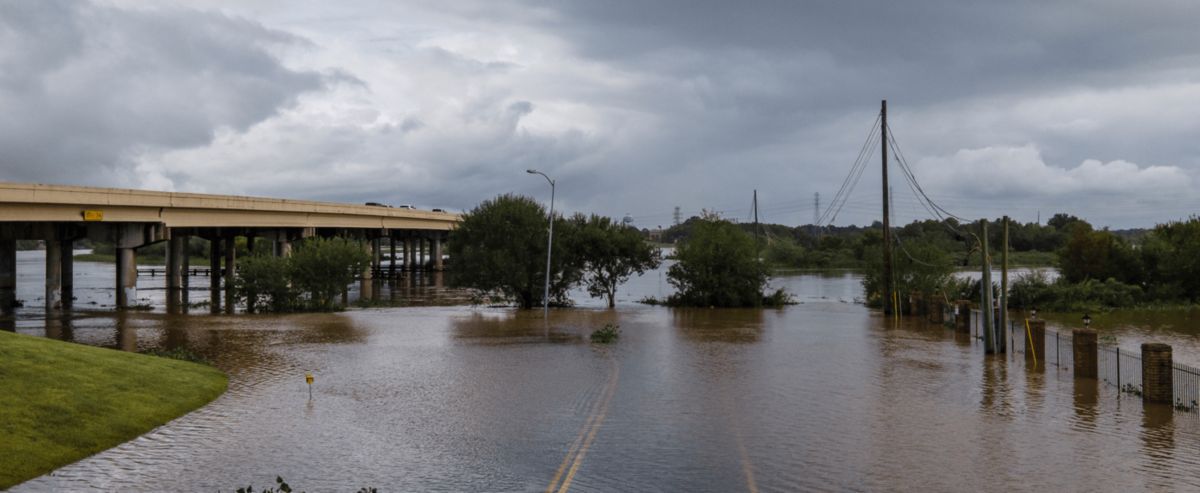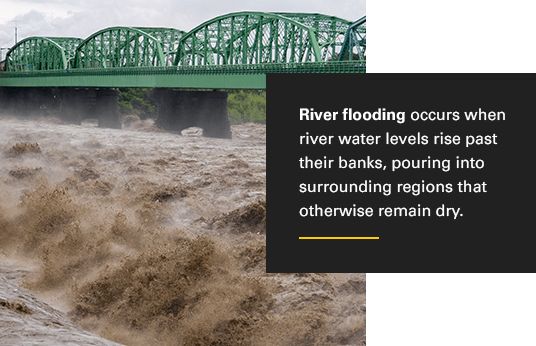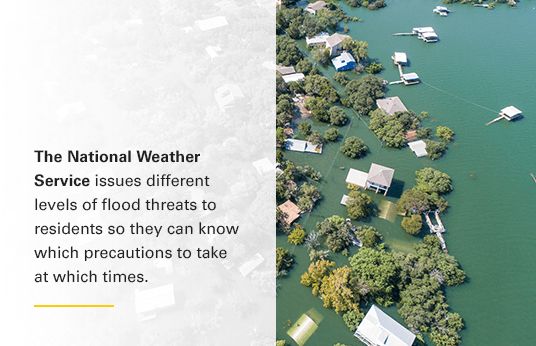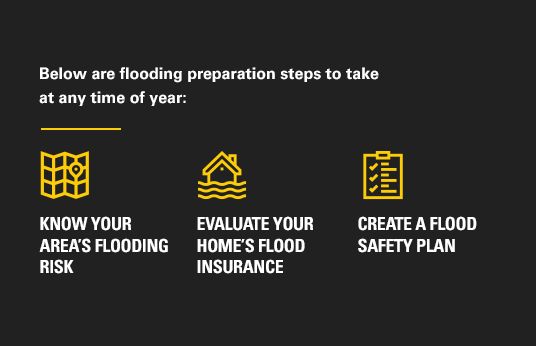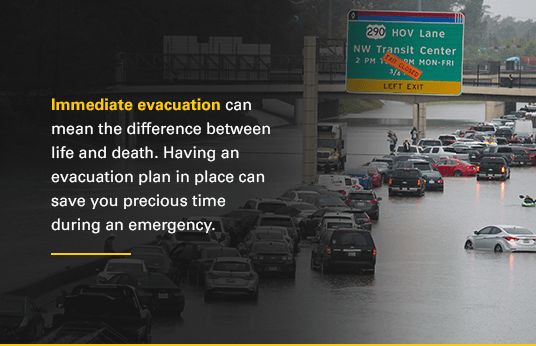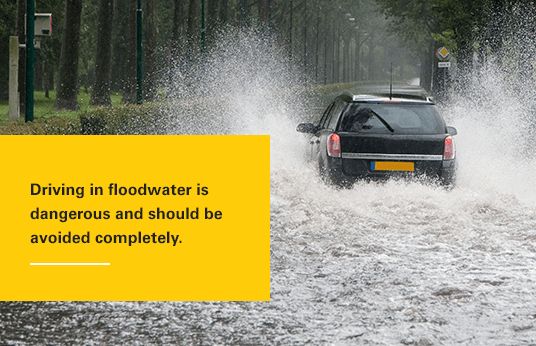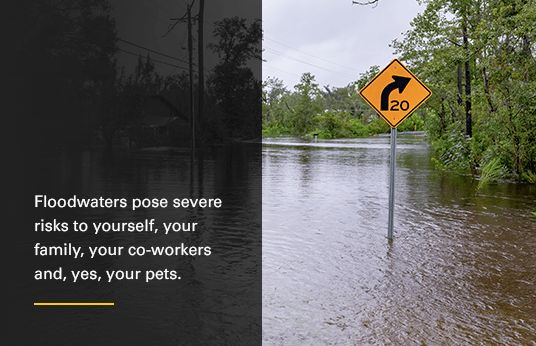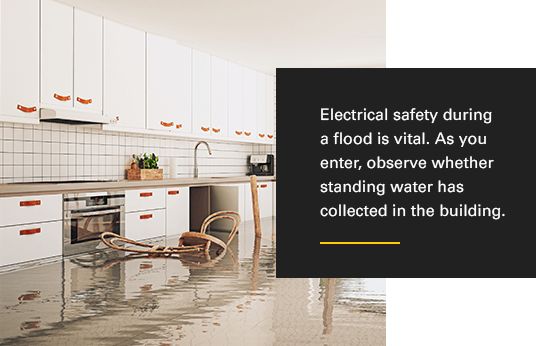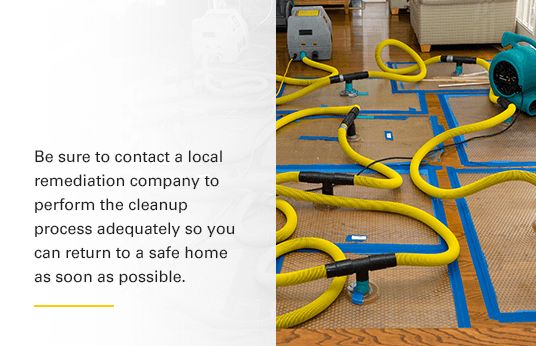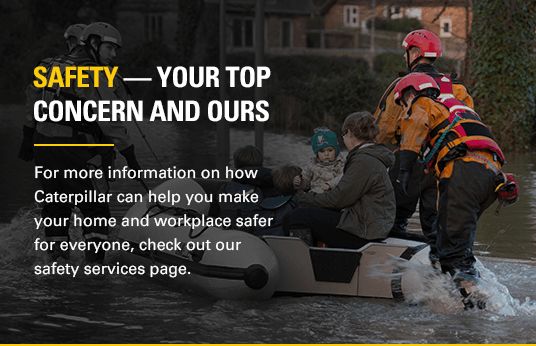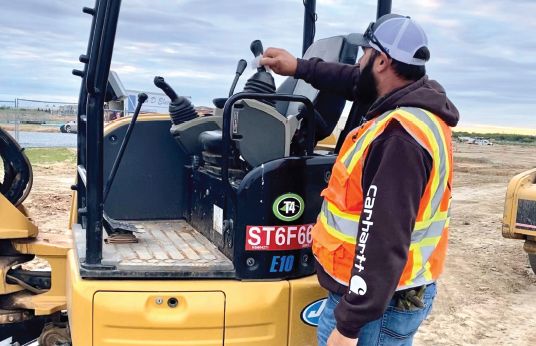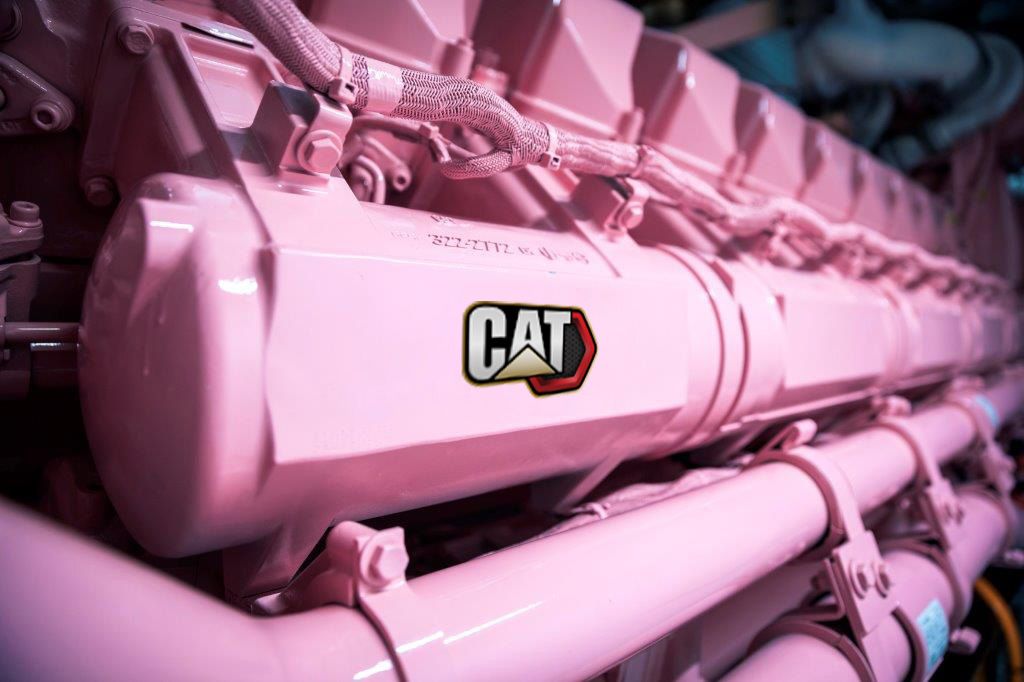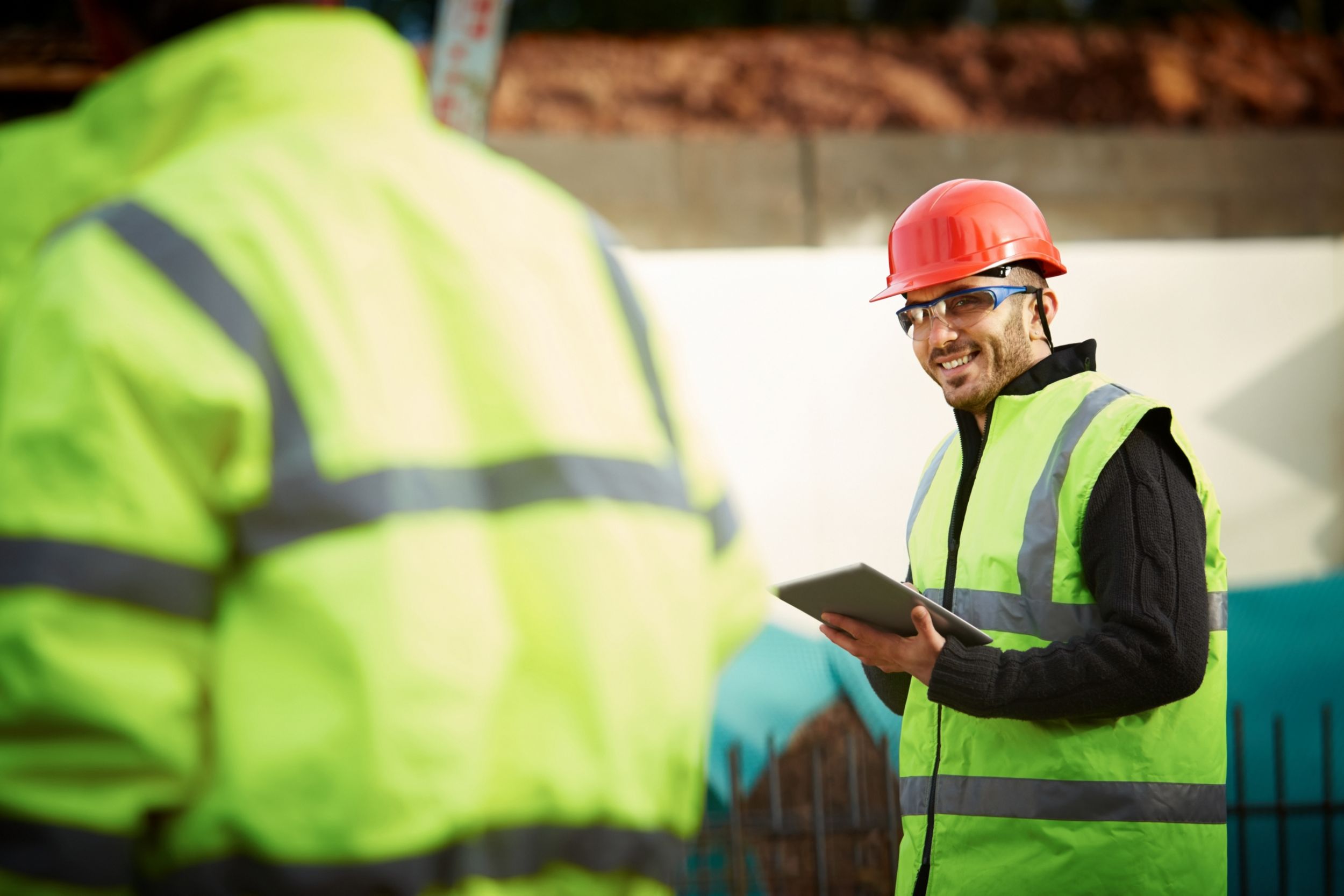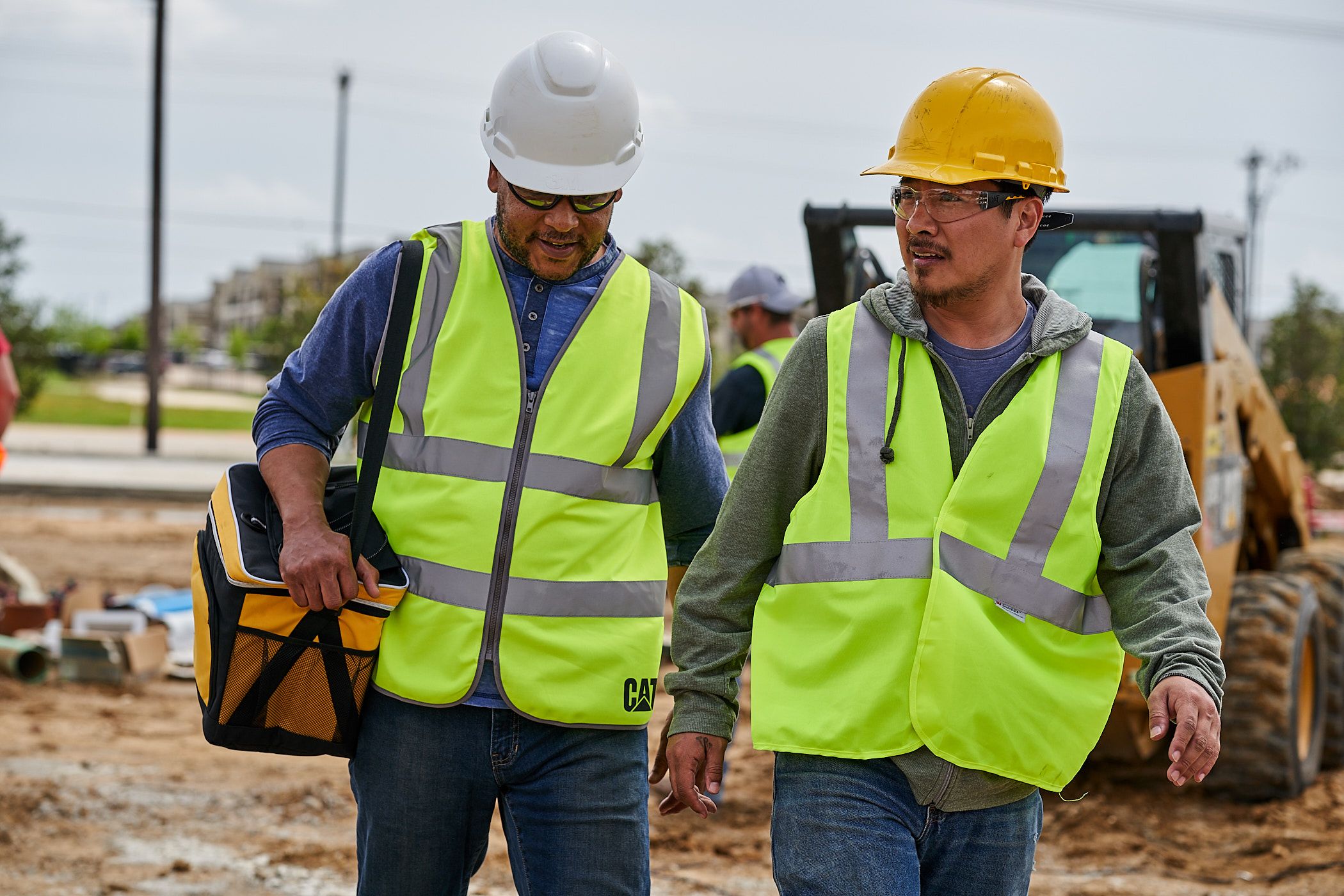

Sign In
Welcome! Sign In to personalize your Cat.com experience
If you already have an existing account with another Cat App, you can use the same account to sign in here
Register Now
One Account. All of Cat.
Your Caterpillar account is the single account you use to log in to select services and applications we offer. Shop for parts and machines online, manage your fleet, go mobile, and more.
Account Information
Site Settings
Security
Flood Safety Tips: Before, During and After
Flood cleanup and recovery are important steps to take immediately after a flood. This guide will prepare you for a flash flood situation in your home or business.
By Caterpillar | Posted: May 12, 2022
We all know floods are potentially devastating natural disasters. They create unpredictable conditions, and the contaminants and hazards they bring with them make travel unsafe.
However, while you can't control the weather — you can control how you and the people around you prepare for floods.
We've created this guide to help prepare you for a flash flood situation whether you're at home or at work. We'll discuss what you should do in these situations as well as the important information residents and business owners in flood zones need to know. Then we'll talk through the most important flood safety tips and the different precautions you should take.
Finally, we’ll discuss how to securely evacuate your home or workplace and how to safely return to your home or business in the aftermath of a flood. Flood cleanup and recovery are important steps to take immediately after a flood, and we'll help you learn which actions you should take to repair whatever damage your building may have sustained.
In short, if you're concerned about future floods — we got you covered.
How Flooding Occurs
If you live anywhere near the coasts, you already know that certain regions of the United States are particularly susceptible to flooding. But you might be surprised to learn that most of the U.S. has endured flooding throughout its history. Below are the most common ways that flooding occurs in the United States:
1. Flash Flooding
"Flash flooding" typically refers to flooding that occurs within 3-6 hours of a heavy rainfall. Water levels in low-lying areas rise rapidly during a flash flood, which can even affect locations farther from the rainfall if the water travels far enough.
Sorry, Midwesterners, but Midwestern states are particularly susceptible to flash flooding since they often go from extremely dry to extremely wet conditions in a short span of time.
High-density urban areas face particularly unique challenges with flash flooding because when the water hits the concrete, there's little room for it to move. The water will pool wherever it can, which often isn't anywhere convenient.
Steep and hilly regions exacerbate flash flooding because of the rapid runoff of water streaming downhill. Rocky terrain also increases flash flood levels because water cannot penetrate hard earth as well as it can in softer soil.

2. River Flooding
As you might imagine, river flooding happens when river water levels rise past their banks.
The water then pours into surrounding regions that would otherwise remain dry. Like flash flooding, river flooding is often caused by heavy rainfall or snowmelt. But, it can also happen as a result of dam failures and ice jams.
Not sure what an ice jam is? Read on.
3. Ice Jams and Snowmelt
Northern states, including Alaska, are no stranger to frigid temperatures. We know our Cat® customers from these states are hearty and used to the cold. No problem.
Unfortunately, riverbeds aren't as good at toughing it out. Winter temps can cause ice to accumulate within rivers, streams and creeks. This leads to ice debris, solid ice jams and blockades of ice.
The higher the ice debris level, the more it prevents water from flowing down the river. When the water can no longer flow downstream, it begins to travel upstream, building pressure against the ice jam.
Eventually, the ice jam may break, releasing an enormous buildup of water that causes flash flooding. Similarly, snowmelt can also cause flash flooding if the temperature increases too quickly to accommodate the runoff water.
4. Storm Surge
Storm surges often occur along the Atlantic and Pacific coasts when they're hit by strong storms and hurricanes. Land-falling or near-land storms cause storm surges and large waves to hit regions along the coast, leading to property damage as well as risks for those nearby.
Although the heaviest amount of rainfall occurs in the center of a storm, storms also produce rain bands on either side, which can drop heavy rainfall directly on the coastal shores.
When planning a safety protocol refresh, remember that the Atlantic storm season runs from June to November. Along the Pacific coast, storm season starts a month earlier, lasting from May to November.

5. Dam and Levee Failure
This last flood type happens when a dam or levee collapses. While the most well-known example of a levee failure resulted from Hurricane Katrina, which wreaked havoc on New Orleans, hundreds more dam and levee failures have occurred throughout U.S. history.
What's especially treacherous about dam and levee failures? They can occur suddenly — and without warning.
Dams can fail in three main ways:
- Overtopping: The water level rises above the top of the dam.
- Seepage: The water seeps through the ground below the dam.
- Structural issues: Part of the dam collapses and releases water.
No matter the cause, anyone who's survived a flood (or watched the aftermath on the news) knows how devastating they can be. That's why it's more important than ever to prepare and develop a local emergency plan.
More on that next.

The Difference Between Flood Watches and Warnings
If you live or work in a flood zone, it’s important to educate yourself on your flood risk. It's also vital to understand the differences between flood terminology that officials use when sending alerts. This information helps your family and co-workers define clear plans for each type of threat so you can all stay on the same page.
The National Weather Service classifies flood threats by level, which helps them tell residents which precautions to take and when. The three main threat levels include:
- Flood advisory: A flood advisory tells residents that an incoming weather event, like heavy rain, may cause a minor inconvenience. Weather tied to a flood advisory is unlikely to result in dangerous flooding, but it can cause annoyances like flooded basements.
- Flood watch: A flood watch means residents should prepare themselves for a potential flood. This threat level indicates that conditions are favorable to significant flooding, but there is still a chance it may not happen.
- Flood warning: This is the highest threat level. It urges residents to take action because a flash flood is imminent or already occurring. For example, residents should move to high ground immediately.
How can you stay safe throughout these flood threats? Keep reading for important flash flood safety tips.

How to Prepare for a Flood
Preparation for flooding is crucial for those living or working in flood zones.
Make a yearly plan to take the following flood safety steps with both your family and your employer:
- Know your area’s flooding risk: Every region of the United States has some degree of flood risk, but some areas are more prone to flooding than others. Learn whether you are in a low-, moderate- or high-risk flood zone by visiting FEMA’s flood map service center. Some online real estate listing sites, like Redfin, also include flood risk ratings on each listing.
- Evaluate your home’s flood insurance (as well as your business, if you're a business owner): Regular commercial, homeowners or renters insurance does not specifically cover damage due to flooding. Flood insurance is a separate policy you will need to purchase from an insurer under contract with the federal government. Flood insurance covers any physical loss caused directly by flooding. If your business is in a flood zone and you have a mortgage from a federally regulated lender, you are already required to purchase flood insurance. However, it is still definitely worth considering for any business operating near a body of water.
- Create a flood safety plan: This is the most important thing you can do to protect your family and co-workers when a flood happens. What does it include? A flood preparation master checklist of all your supplies, tools, gear and other survival needs. Sample items in a flood preparedness kit include copies of any important documents and medicines. It also includes emergency supplies, like flashlights, first-aid kits, batteries and more.
- Clear drains and downspouts: During a flood, your home's drains should be clear so they can properly direct water away from your foundation.Clean out your gutters at least twice a year, and if you need to, add a downspout extension pipe to your downspout drains.
- Map an escape route: Knowing where to go before an emergency happens can save you precious time later. Identify how you'll travel — on foot, by car or by using public transportation — and figure out which paths are available to you. Additionally, note places you can stay, such as public shelters, friends' homes or motels.
- Plan for your pets: Few things are more devastating than losing a beloved pet. If you have pets, make sure you can easily retrieve their supplies and carriers in a pinch, and check that the lodging you designate accepts pets. Form a backup plan with family or friends in other towns in case you need to leave your pet with them.
To clarify, you and your family/your business should complete the above steps before a flood happens. Once a flood watch or warning has been issued, it's go time.
What to Do During a Flood
When local authorities signal an emergency situation, it's time to take action. Your family and colleagues should be able to switch gears at a moment's notice.
Take the below steps to prepare for a potential or imminent flood:
- Collect fresh water: If you don’t have a supply of bottled water ready in your emergency preparedness kit, you’ll need to immediately collect fresh water and keep it safe from floodwater contamination. Tupperware and sealed water bottles work well for this.
- Check your sump pump: If your county is under a flood advisory or flood watch, you need to make sure your sump pump is functioning properly. Check that the power source is intact, including the backup power source if you have one.
- Save your prized possessions: Finally, it's time to protect your most valued possessions. Assess the items you normally keep at floor level — which ones do you most need to save? Make sure you secure any important documents. If you have cinder blocks, you can use them as shelves to store items several inches off the ground. Alternatively, you can move items up several levels or place them in your attic.

When to Evacuate for a Flood and How to Prepare Your Home or Business
If necessary, your local authorities, under the guidance of the National Weather Service, will issue evacuation orders. This may sound scary, but it's meant to keep everyone and their loved ones safe.
Evacuating your home or business is a time-sensitive issue, so tune in to local news channels while you prepare. Be aware of any changes in local conditions so you can act quickly in this high-alert situation.
There are several important flooding safety factors to keep in mind when evacuating your home or business, including:
- When you receive a flood warning, seek shelter right away. Evacuate immediately if told to, and move to higher ground if possible.
- Avoid bridges over fast-moving water — the water can wash the bridge away, bringing everyone down with it.
- Shut off all power, water and gas lines to your home before you leave.
- Post a note to your storefront or door telling emergency responders that you have left and where you are going.
- Lock your doors and windows.
- Grab your emergency kit and leave. Follow recommended evacuation routes, as shortcuts may be blocked by fallen trees or other debris.
No one wants to have to leave their home or business behind. But, the harsh truth is that immediate evacuation can mean the difference between life and death.
Having an evacuation plan in place can save you valuable time during an emergency. It's also critical to communicate this plan to everyone who may be at risk and practice it earlier in the year before heavy rains are expected.

Why It's Never Safe to Drive Through Floodwaters
When evacuating a flood by car or truck, it may temporarily seem like a good idea to drive straight through floodwaters. Nope. Not even close.
The water could cause your vehicle to lose all traction and float through the rushing waters — and you'll be forced to surrender control. Keep in mind: only 12 inches of water can cause many vehicles to float, potentially sweeping you and yours downstream.
Floodwaters also make it impossible for drivers to see the conditions of the road below the water’s surface. There could be obstructions and hazards that your vehicle can crash into, or the road could be completely eroded.
For this reason, it's important to remain calm and plan out the best route based on local guidance.
That said, should the worst happen, don't panic. If your vehicle takes on water, turn off your engine. Turn on your headlights and hazard lights so you'll be more visible to emergency personnel. If you can, roll down your windows and climb out of the car. Otherwise, wait for the car to fill with water — by this point, the pressure will have equalized and you should be able to open the door. Hold your breath and swim to the surface.
Leaving your car will be scary, but it can save your life.

Staying Safe From the Dangers in Floodwater
Floodwaters pose severe risks to yourself, your family, your co-workers and, yes, your pets.
Here's why avoiding contact with floodwaters is crucial:
- Contamination: Floodwaters contain harmful toxins, pathogens and waste products. Just think of all the sewage that could be in there. Not to mention pesticides, household cleaners and carcinogenic industrial waste byproducts. Children have lower immunity levels than adults, so keep any small ones away from the water.
- Hazards: Floodwater can also contain large physical obstructions that are hazardous to safety. Think downed power lines hiding below the water’s surface. Other obstructions can include objects like vehicles, lumber, metals and other sharp debris that can injure you.
- Animals: Another risk that many people don’t consider when wading into floodwaters is that animals also get washed away. And not all of them are cuddly. Creatures like rodents, snakes or even stray pets may act aggressively out of fear, so it's best to stay away for your own safety.
Floodwater hazards can cause infectious diseases like infected wounds, skin rashes, gastrointestinal diseases and tetanus, all of which are even harder to treat during emergencies.
That said, because floods are unpredictable, you may encounter floodwaters even after taking precautions.
It's for this reason that your flood preparedness kit should include personal protective equipment in case of floodwater contact. Flood PPE includes rubber boots, gloves and goggles — anything to prevent you from directly contacting contaminated water. Make sure you have enough for all your family members and co-workers.
If you do touch floodwater, you should:
- Clean wounds immediately with soap or antiseptic.
- Cover open wounds with waterproof bandages.
- Wash clothing with hot water and detergent or dispose of it if unable to wash it right away.
If your skin has been punctured by a metal object, debris or animal bite, you may need a tetanus booster shot. Always seek medical attention for injuries resulting from floodwater as soon as it's safe to do so.

What to Do After a Flood
Of course, you'll want to return to your home or workplace as soon as possible. But, remember that it may not be in the same shape as it was when you left it. Local authorities will also have to clear your area to ensure it's safe.
Once you get the all-clear, you can return. Some tips to keep in mind:
- Return during the day: Daylight is going to be safer for a whole host of reasons. The clear light of day can reveal safety hazards and threats that might not be visible in the dark. If you absolutely must return at night, be sure to let others know your whereabouts and bring plenty of flashlights and batteries.
- Be cautious about power: Electrical safety during a flood is vital. As you enter, observe whether standing water has collected in the building. If so, you'll need to turn your power off if you didn't when you evacuated. However, never touch your power switch while standing in water. If you can't safely access your power switch, call an electrician for help.
- Check for gas leaks: Damage to your home or workplace may have caused a gas leak. If you smell gas, shut off the gas line, open all the doors and windows and leave as quickly and safely as possible. Your next step should be contacting local authorities to let them know about the leak.
- Be aware of mold: If you haven’t been back in several days, be aware that mold may have begun to form. It sounds crazy, but mold grows within 24 hours of water damage. Opening up doors and windows will help improve airflow and starve mold growth.
- Dispose of contaminated items: We're sorry to say, but food, furniture and other belongings that have touched floodwater or mold should be disposed of or salvaged immediately.
- Find clean drinking water: It probably goes without saying, but don't drink tap water until local authorities have verified it's safe to drink. Your town may be under a boil water advisory for some time. If you have a well on your property, be sure to have your well water tested before you use it. Never use contaminated water for drinking, cooking or washing.
- Begin drying the building out: When your electricity has been returned or generators have been installed, begin drying out the building using fans and dehumidifiers. Face the fans toward open windows to encourage mold spores to exit rather than spread through your building.
With everything going on, it's more than likely you'll need to find alternative accommodations while you clean and fix up your home. Public shelters, hotels or motels or the homes of friends and family are all potential options. Businesses affected by flooding could rent out a temporary office space or work remotely while the workplace gets cleaned up.

Cleaning up and Replacing After a Flood
After a flood, your home or work building may be in rough condition. When you receive the go-ahead to return, your first instinct may be to begin cleaning right away. But a DIY approach may be too risky, especially for extensive damage. Avoid accidentally injuring yourself by contacting a certified water damage remediation service to perform the cleanup for you. These workers have the right tools and protective equipment to get the job done without risking their lives, and they can clean more thoroughly than you may be able to by yourself.
Because floodwaters can introduce mold and other contaminants into a building, you may not be able to stay there until the cleaning process is over. Restoration can take anywhere from 72 hours to two weeks, depending on the extent of the damage and how long things take to dry.
The good news? Once remediation is finished, you can rebuild and return to your life knowing your space is free of hazardous substances.

Safety — Your Top Concern and Ours
When disaster strikes, you need to prioritize what matters most. We at Caterpillar are committed to creating innovative solutions to help communities in times of need. And that commitment extends to you — your safety during a flood or natural disaster is our utmost concern.
For more information on how Caterpillar can help you make your home and workplace safer for everyone, check out our safety services page. We offer workplace safety training courses in various accessible formats, including virtual reality and e-learning, that can help build your site's safety culture and keep things running smoothly.
Related Stories
-
Prioritizing Employee Health and Safety
Jobsite safety should always be a top priority, even beyond the machines. Find out how Cat customers have taken extra precautions to keep their employees healthy during the COVID-19 pandemic.
Learn More -
Safe Host Takes a Colourful Approach to Safety
Colour-coded equipment is used to create a safer work environment at a data centre in Switzerland.
Learn More -
Tips For Preparing a Business Disaster Plan
A natural disaster disrupts everything from your daily schedule to the ability of your business to continue operations. Read our tips for creating plans and preparing for the worst.
Learn More -
Why Mental Health Support Matters on Every Jobsite
Mental health in construction often lacks the attention it deserves. Caterpillar teaches the importance of mental health safety on the job site.
Learn More
